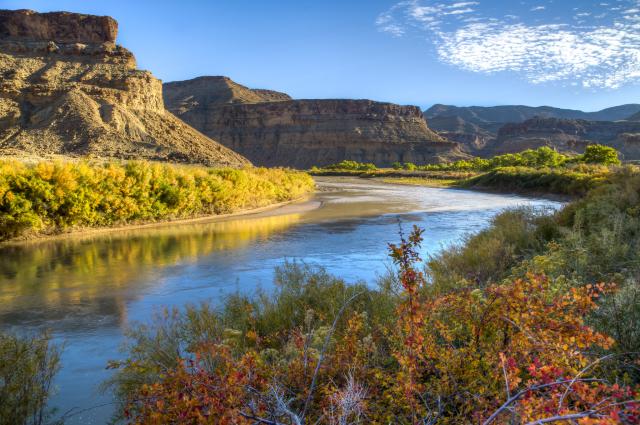BLM modernizes public lands temporary closure notifications
Organization:
Media Contact:
WASHINGTON — In order to allow the bureau to better protect people, public lands, and public resources, today the Bureau of Land Management announced a rule that modernizes the way it informs the public about temporary closures and restrictions on public lands, aligning it with processes used by the National Park Service, U.S. Fish and Wildlife Service, and the Department of Agriculture’s Forest Service. BLM will now use modern and widely available communication tools instead of publishing notices in the Federal Register.
“It is important that we are able to reach the most people in our communities when we have temporary closure notices,” said Tom Heinlein, BLM Assistant Director for National Conservation Lands and Community Partnerships. “Posting this kind of notice online and on local media allows us to better coordinate with partners like the U.S. Forest Service, National Park Service, and state and local law enforcement and public safety agencies, who are not required to publish Federal Register notices when temporary restrictions are needed.”
The change applies only to temporary closures and restrictions that are typically used for emergencies that pose unforeseen safety or health risks or special events such as off-road vehicle races. The rule requires temporary closure notices be posted online, distributed through local media, and specify the dates and times the order will start and end.
Existing rules already allow Fire Prevention Orders and fire-related temporary closures and restrictions to take effect without publishing a Federal Register notice, and in practice the BLM continues to use modern communications and media tools to notify the public broadly and directly about management actions and decisions.
“Every year, more and more visitors are using America's public lands, and our mission to ensure public health and safety and protect the resources these lands offer continues,” said BLM Director of Law Enforcement and Security Jason O’Neal. “Modernized regulations improve our ability to effectively carry out this mission in coordination with our state and local partners, especially when emergencies or other unforeseen circumstances arise. Updating this rule gives us the agility we need to better serve and protect people and the places we all value."
“The Western States Sheriffs’ Association, through it’s Public Lands/Government Affairs Committee, has worked closely with the BLM throughout the administrative process to offer detailed suggestions to the Temporary Closure and Restriction rule,” said Tracy Glover, Kane County Sheriff in Utah and Chairman of the Western States Sheriffs’ Association (WSSA) Public Lands/Government Affairs Committee. “WSSA’s leadership team has carefully reviewed, and is pleased to offer our full support for, the rule in its final draft. The BLM analyzed and implemented many of the suggestions made by western sheriffs. The final draft of the rule will create a more streamlined notification process for narrowly scoped, common-sense closures and restrictions during emergency situations and special events on BLM administered lands. This approach will improve timely communications with the public and will ultimately improve the overall safety of public lands users. The WSSA appreciates the long and consistent working relationship we have with BLM leadership. We look forward to continuing our partnership well into the future.”
The updated regulations also clarify that BLM may issue a temporary closure or restriction to ensure privacy for Tribal activities associated with traditional or cultural use. The rule also allows exemptions from temporary closures for Tribal members to engage in traditional uses of public lands, as appropriate, and in Alaska, consistent with the Alaska National Interest Lands Conservation Act. The final rule has no effect on any provisions in the John D. Dingell, Jr. Conservation, Management and Recreation Act related to non-emergency closures or restrictions of hunting, fishing, or recreational shooting.
The BLM manages about 245 million acres of public land located primarily in 12 western states, including Alaska, on behalf of the American people. The BLM also administers 700 million acres of sub-surface mineral estate throughout the nation. Our mission is to sustain the health, diversity, and productivity of America’s public lands for the use and enjoyment of present and future generations.

